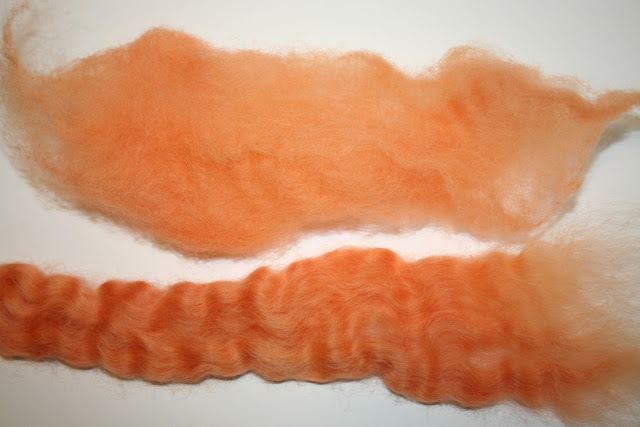Madder is native to the Mediterranean, Southeast Europe,Asia Minor,and has been naturalized throughout Europe and the United States. It's a sprawling plant with whorls of leaves similar to sweet woodruff,and tiny yellow flowers. The roots can be harvested after the two or three (some sources said four) growing seasons.
An historically significant dye plant-Egyptian burial
wrappings have been found that were dyed with madder. I mentioned last week that
I had read that cochineal was used to make the “Red Coats” coats red- well it
turns out that madder was used as well.
Madder was also valued for it's medicinal properties and the list of uses is long- it includes...cure for jaundice, inflammations, kidney stones, dysentery,diarrhea, strengthen bones, cure for rickets, and rid the body of worms -not to
mention a facial to eliminate freckles.
“In the nineteenth century, dyeing wool or cotton with madder was done in several steps. The textile was first scoured in a mildly alkaline solution, then steeped in oil emulsions, then washed in sheep dung. Next it was rubbed with oak galls, then treated with alum, and only after that dyed with partly fermented roots and root powder of madder. “ p372 Rodale's Illustrated Encyclopedia of Herbs.
I'm thankful those weren't the steps I was going to undertake...Still it seems madder proved to be a little trickier to handle than the other dyestuff in my kit. It would require some gentle coaxing.....
I remember when I purchased my kit Carol edited
the instructions to say use 4 tablespoons (as opposed to 3) of alum and no
cream of tartar for 1 pound of wool to mordant the wool. I soaked the root powder overnight, noticing that the powder within the muslin bag was resistant to absorbing the soaking water. The next morning I simmered the dye bath for two hours keeping the temperature below 185F. Then poured out the colored
water- held it in a bucket- and started a new bath with fresh water which I simmered for
another hour. Then the new bath was combined with the first bath. Alum mordanted
wool was added and simmered for one hour at 155F. (Van Stralen says higher temps would result in brown) I let it cool and sit overnight. The wool came out of the dye bath much lighter and brighter orange than I anticipated. So I decided to
try and simmer it again... still I ended up with a light orange- it didn't change at all. I actually like orange - I was just hoping for a little darker orange.
Van Stralen notes that roots she used to get produced reds- “The madder available nowadays seems to give more orangey colors.” P. 74 - her book was published in 1993. That's intriguing but no explanation is offered- and it sounds pretty mysterious to me...
You might remember that I took on this marathon dyeing project during a week that my husband and son would be away on a cross country road trip. This left the kitchen fully available for all the simmering and cooling going on. Well they surprised me and came home a day earlier than I expected- I really was happy to have them home safe and sound- but there was still some simmering to do...Thankfully they slept most of that Saturday as I finished things up.
With the light results I got with the madder even after two sessions in the dyebath- I didn't bother with an exhaust bath on this one.
Friday I want to tell you about a wonderful book I read last week and finish up with some notes about what was probably my favorite dyestuff of all that I experimented with.
You might remember that I took on this marathon dyeing project during a week that my husband and son would be away on a cross country road trip. This left the kitchen fully available for all the simmering and cooling going on. Well they surprised me and came home a day earlier than I expected- I really was happy to have them home safe and sound- but there was still some simmering to do...Thankfully they slept most of that Saturday as I finished things up.
With the light results I got with the madder even after two sessions in the dyebath- I didn't bother with an exhaust bath on this one.
Friday I want to tell you about a wonderful book I read last week and finish up with some notes about what was probably my favorite dyestuff of all that I experimented with.






2 comments:
Look at all of that beautiful hand dyed yarn! I cannot believe you were able to get such vibrant colors with natural dyes, how wonderful!
Agreed, that is such a happy rainbow of color!
Post a Comment